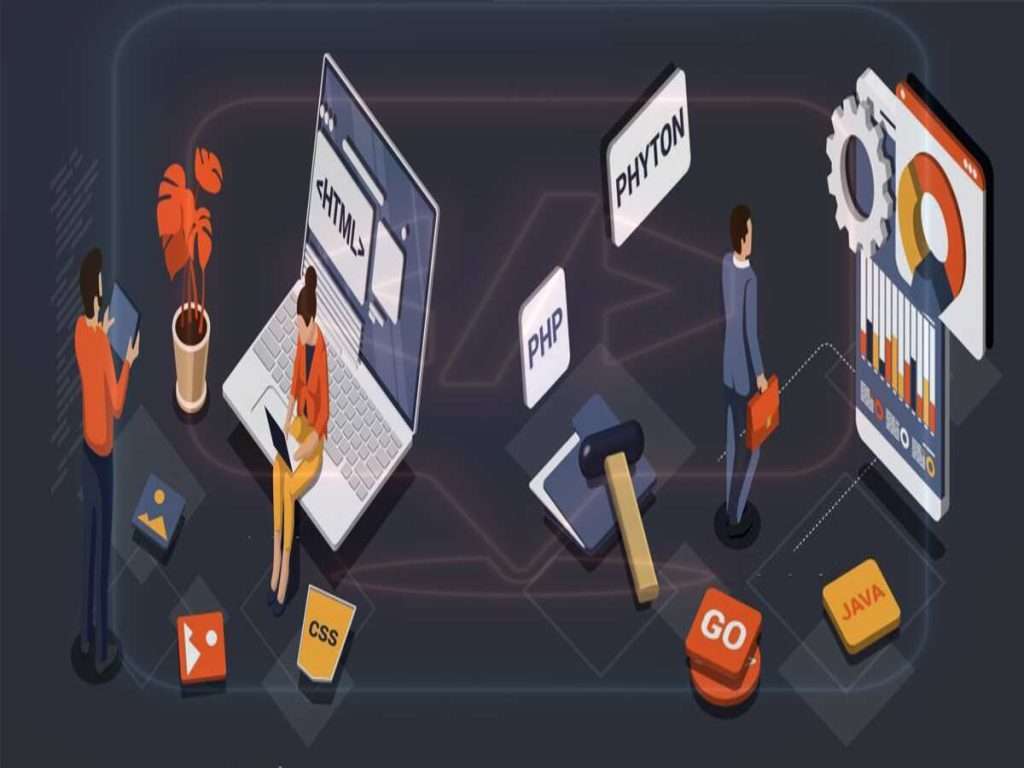Whenever we create an app or develop an application, what are the coding practices for it? What source code will be used in the program, the front end, and what will be the back end in this language? The first question to understand all these things comes over language (front end vs back end). First of All, what is Language?
Language (front end vs back end)
Way of communication: A programming language is a formal language comprising instructions that produce various outputs. The other programming languages consist of instructions for computers. So, for communication, we need a language that you should understand and others should understand. The same method also happens in our computer; the computer has its programming language if we have to do a set of instructions for it. He has to do some things for us, from our system to our app; if I create my app, some resources must be made for Android. So, I have to insert something into it via programming code to create a particular setup. So, we will call it a language; if we talk here, we will call it a programming language.
If we want to explain something to the computer or any machine, we will call it a set of instructions. So, we will take that set of instructions into a particular language. There are different languages for different platforms. Similarly, there will be a foreign language for Android now, and if a specific website is to be designed, then there will be a different language for that, too. If there is a software developer, there will be a foreign language for that, too.
Android Language
To understand the Android language, i.e., which language is to be used in Android, and before understanding the development, we understand the concept of a static and dynamic app. This will make our idea clear enough (front end vs back end).
Within Android, we can develop the application in two ways.
1. Static App
2. Dynamic App
Before understanding this particular app, let us know its terms.
Static Apps (front end vs back end)
The Static means constant, which remains the same continuously.
Static application or not reliant on an internet connection to an online server or database. They can function offline only with the device on which they are installed.
Dynamic means something that changes at runtime and something that doesn’t change that stays static. The answer of two plus two will be four. Apart from this, many apps do not require any internet connection. You can do it online if data needs to be changed at runtime and updated to the user level. When the internet is connected, all the apps keep updating, changing, etc. We can identify static apps whose result does not change given that there is no requirement for the internet if all these apps run without internet or change. So, all these apps are called static apps.
Dynamic Apps
The dynamic app doesn’t run without the internet; dynamic changes but has no constant speed. All the apps of all the social media platforms are called active apps. When we run social media, Facebook, WhatsApp, etc., it does not run without the internet (front end vs back end).
Dynamic apps are reliant on an online server and database. When connected, these apps retrieve data updates from the central server so that any interactive changes to development design Functionality or roll out across all devices simultaneously.
There are two things essential: if we make any application and make any software, make any website, that means we do any programming.
1. Front End
2. Back End
The front end means what you see on the front screen,i.e., user interface UI. And backend means UX user experience. The backend method either fetches the data from the server or collects your internal data and fetches the primary result.
Front End Language
Front-end languages are the backbone of web development, shaping the user experience on websites and applications. These languages include HTML, CSS, and JavaScript, each with its unique role.
HTML (Hypertext Markup Language) is the structural foundation, defining the content’s layout and hierarchy. CSS (Cascading Style Sheets) adds visual appeal by controlling fonts, colors, and designs, enhancing the user interface. Conversely, JavaScript brings interactivity and dynamic features to the front end, enabling animations, form validation, and real-time updates.
Mastering these front-end languages is crucial for web developers in today’s digital landscape. Their synergy empowers developers to create visually stunning, user-friendly, responsive websites that engage and delight users across various devices and platforms.
Back End Language (front end vs back end)
The backend of anything must be visible to the general user and administrator. It can be a piece of code or a running program on the server machine to serve the user’s needs. The database is also a part of the backend, i.e., SQLite.
In web development, the importance of backend languages cannot be overstated. All programming languages are the backbone of web applications, handling server-side operations, database management, and overall functionality.
Popular backend languages like Python, Ruby, PHP, and Node.js offer developers a wide range of tools and libraries to streamline development processes. They enable seamless communication between the front end and the server, ensuring data retrieval, storage, and processing occur smoothly.
Choosing the correct backend language for a project is crucial, as it impacts performance, scalability, and security. A well-structured back end ensures a robust and responsive user experience. When making this critical decision, developers should consider factors like project requirements, community support, and scalability.
In conclusion, backend languages are the unsung heroes of web development, working behind the scenes to make applications function seamlessly. Selecting the appropriate language is critical to building reliable and efficient web solutions.




